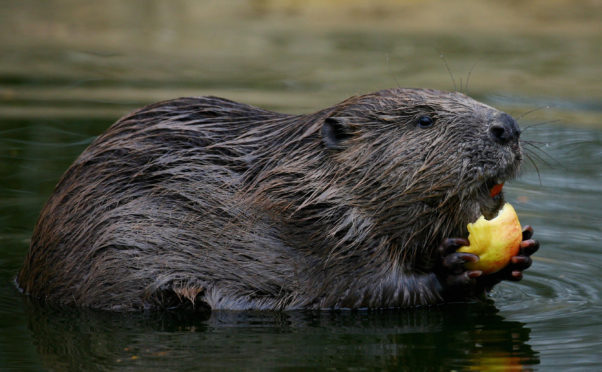If ever a modern-day example was required to highlight the problem caused by introducing or reintroducing a species to our managed environment without a management plan in place – the presence of unlicensed beavers in Tayside is textbook.
Although once native to Scotland, their effective absence from the country for approximately 400 years (having been hunted to extinction for their pelts) means they are now considered non-native.
Whilst a planned reintroduction has been taking place in Knapdale for a number of years, their now unfettered presence in Tayside is, we understand, as a result of a breakout from a privately-owned collection.
There can be no doubt that the presence of beavers in the wild adds to our biodiversity, helping create evolving woodlands and wetlands and, in some instances, slowing upland river flow, thus helping to reduce the risk of flooding, as well as being enchanting to see in the wild.
However, they also cause harm by burrowing into river banks, leading to erosion, damaging and destroying trees of all ages and, increasingly, flooding valuable arable farmland as a result of dam construction.
Many Tayside farmers have been impacted and have vociferously sought support from their representative organisations to tackle the problem, and we are increasingly being contacted by affected parties telling us of the damage caused and asking what can be done to mitigate the problem.
Currently, beavers have no protected status meaning they can be (controversially) culled under Scottish Natural Heritage (SNH) guidance between September 1 and March 31, but there is no statutory closed season as such.
If culling does take place, as things stand, they must be left in situ although it is recommended SNH should be notified.
Other suggested measures to limit damage include digging out dams, which can encourage the animals to relocate and helps prevent unwanted flooding. However, doing so takes time and money and to some extent simply, quite literally, shifts the problem downstream.
Despite there being no current legal protection (Scottish Government had promised legislation in 2018), numbers are on the increase with a report released by SNH in October last year estimating there are now 430 beavers living in 100 active territories in Tayside compared to 150 in 40 territories in 2012.
This same report perhaps offers some hope for both the affected landowners and conservation bodies.
SNH are setting up a mitigation scheme with input from a range of interest groups, including NFU Scotland, to come up with techniques to help deal with the problems encountered, SNH will provide free advice and suggested solutions including deterrent fencing, tree guards, piped dams as well as culvert and flood bank protection.
Our concern is that, whilst undoubtedly helping to mitigate the problems, these measures do not solve them – and who is to pay for them?
Therefore, all interested parties await the overdue legislation from Holyrood with increasing exasperation. Hopefully, the SNH report from October 2018 gives sufficient information to inform policy and management strategies.
It is expected any legislation, when it is forthcoming, will give the beaver protected status as well as introducing a management system enabling agriculture and other affected land uses to be protected, thus managing the conflict and maximising benefit.
What this means in practice remains to be seen but perhaps some form of, hopefully, simple licensing scheme to cull beavers, remove dams etc, in key areas will be allowed.
Until then it would seem as though beavers will continue to spread across Tayside causing angst for both sides of the argument as land and trees are damaged and beavers culled seemingly without control.
Ralph Peters is head of estate management and professional at Bidwells.







